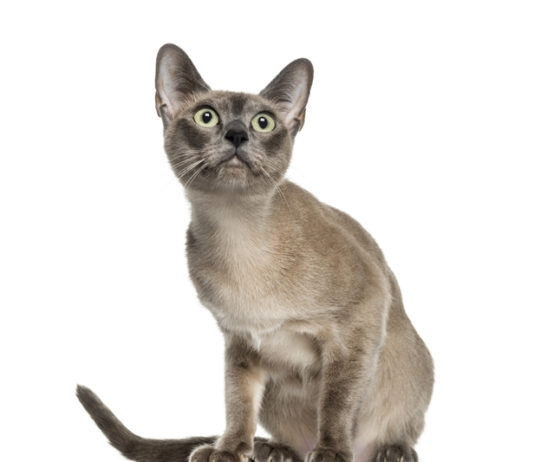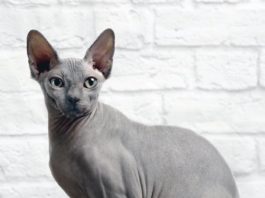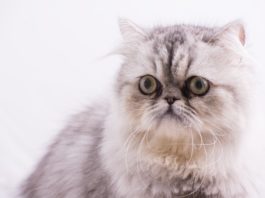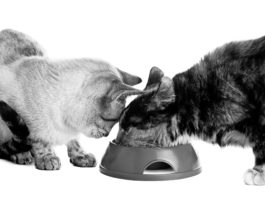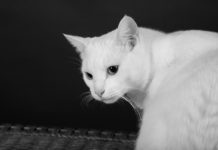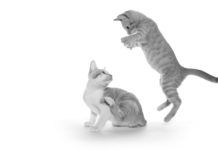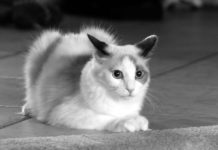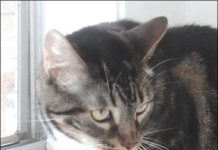The Odds of Deafness in White Cats
If you own a white cat, you most likely love his striking snowy coat and bright eyes. But you might also know that these brilliant features have implications that go deeper than appearance.
When Acrobatic Prowess Fails Them
When it comes to leaping, landing and twisting in mid-air, cats earn accolades for agility, flexibility and acrobatic prowess. Its not unusual to witness your cat leap effortlessly to the top of the refrigerator and, when ready, to land softly and easily on the kitchen floor. But despite their grace and flexible physique, cats do not always land safely on their feet and can be at risk for painful sprains, broken legs, and other fractured bones.
In the News: Persians DNA May Hold Clue to Their Heart Disease
Winn Feline Foundation has awarded a grant for the evaluation of DNA variants associated with hypertrophic cardiomyopathy, or HCM, in Persians. HCM is the most common cardiac disease in cats. Previously, genetic mutations have been found in Maine Coons and Ragdolls, which led to genetic tests for screening before breeding.
In the News: Searching for Genetic Clues in Siamese and Related Breeds
Amyloidosis is found in Oriental shorthair, domestic shorthair, Siamese, Burmese and Abyssinian breeds. The disease develops when the abnormal protein amyloid, a fibrous substance, collects for unknown reasons in tissues and organs. The disease can become fatal if amyloid is deposited in the tissue of critical organs, such as the kidneys, liver or heart. The disease also affects humans.
Managing Diabetes Requires Dedication, but Long Life Is Possible
Q: My 11-year-old male domestic shorthaired cat has just been diagnosed with diabetes. I am feeling overwhelmed by the prospect of managing this condition and concerned for his well-being. Can you tell me a bit about this condition, his prognosis and how it can be managed?
Understanding the Incidence of Deafness in White Cats
I am a breeder of Turkish Angoras, and recently Im seeing references stating that the incidence of deafness in white cats is 80 percent. This is much higher than the approximately 30 percent that we have seen in our breeding population. Can you shed some light on this discrepancy?
Ask Elizabeth: November 2014
Q. Our year-old male cat, found at a county animal shelter seven months ago, has been diagnosed with eosinophilic granuloma complex (EGC). His symptoms are incessant scratching, puffy gums, blistering mouth, swollen front paw, lameness, limping. Our veterinarian has prescribed steroids for him, and these have been somewhat helpful, but can you explain this disease so that we can better understand what is going on? …
Most Cases of Deafness Are Acquired
If your cat has become unresponsive to everyday sounds, squeaky toys or his name, if he doesnt know youre in the room unless you touch him, or if a loud noise fails to awaken him, a veterinary visit should be scheduled to determine if hes losing his hearing. Hearing is a vital sense for cats and greatly contributes to their self-preservation and comfort with us. Deafness in cats can be caused by a wide variety of conditions.
How did the tabby and cheetah get their stripes?
Researchers gathered DNA and tissue samples from feral cats in Northern California. They also studied skin biopsies and blood samples from captive and wild South African and Namibian cheetahs, and in a study believed to the first to identify a molecular basis of coat pattering in mammals, they made this discovery: Tabby cats and rare king cheetahs share a gene responsible for the cats’ stripes and the cheetahs’ spots. However, when a mutation occurs, the tabby will develop patches of color rather than stripes, and the cheetah’s spots and blotches turn into wide stripes down its back.
Short Takes: January 2013
A Husky found the kitten lying in the street and gently carried him in his mouth home to his owner. Scooter had a broken spine and his back legs were paralyzed. Euthanasia would have been the likely fate for a kitten in similar shape. But Betsy Kennon, VMD, at Harts Run Veterinary Hospital in Fox Chapel, Pa., was determined to save his life — and she did. Hospital clients chipped in to buy Scooter a custom-made wheeled cart to get around.
The Beautiful Tabby
Without even seeing your cat, Joan Miller, vice-president of the Cat Fanciers Association, knows your cat is a tabby. Impossible, you say. My cat is a Persian. Or my cat is a plain black alley cat. How does Miller decide that your cat is a tabby? "Because all cats are tabbies, genetically speaking," explains Miller. "All cats have a pattern of stripes, blotches, spots or whorls. If they have the dominant gene, theyre called Agouti - and they show the tabby pattern. If they receive the recessive gene, theyre known as non-Agouti, and they will be a solid color with no pattern." However, you can often still see the tabby markings underneath as a ghost pattern. The next time you get the chance, look at a black cat in the sun. You should be able to see the hint of a tabby pattern. "This is a lot easier to see in kittens," says Miller.
Why No Two Are Exactly Alike
Some experts believe its become survival of the cutest. Heres what makes your cat unique.

